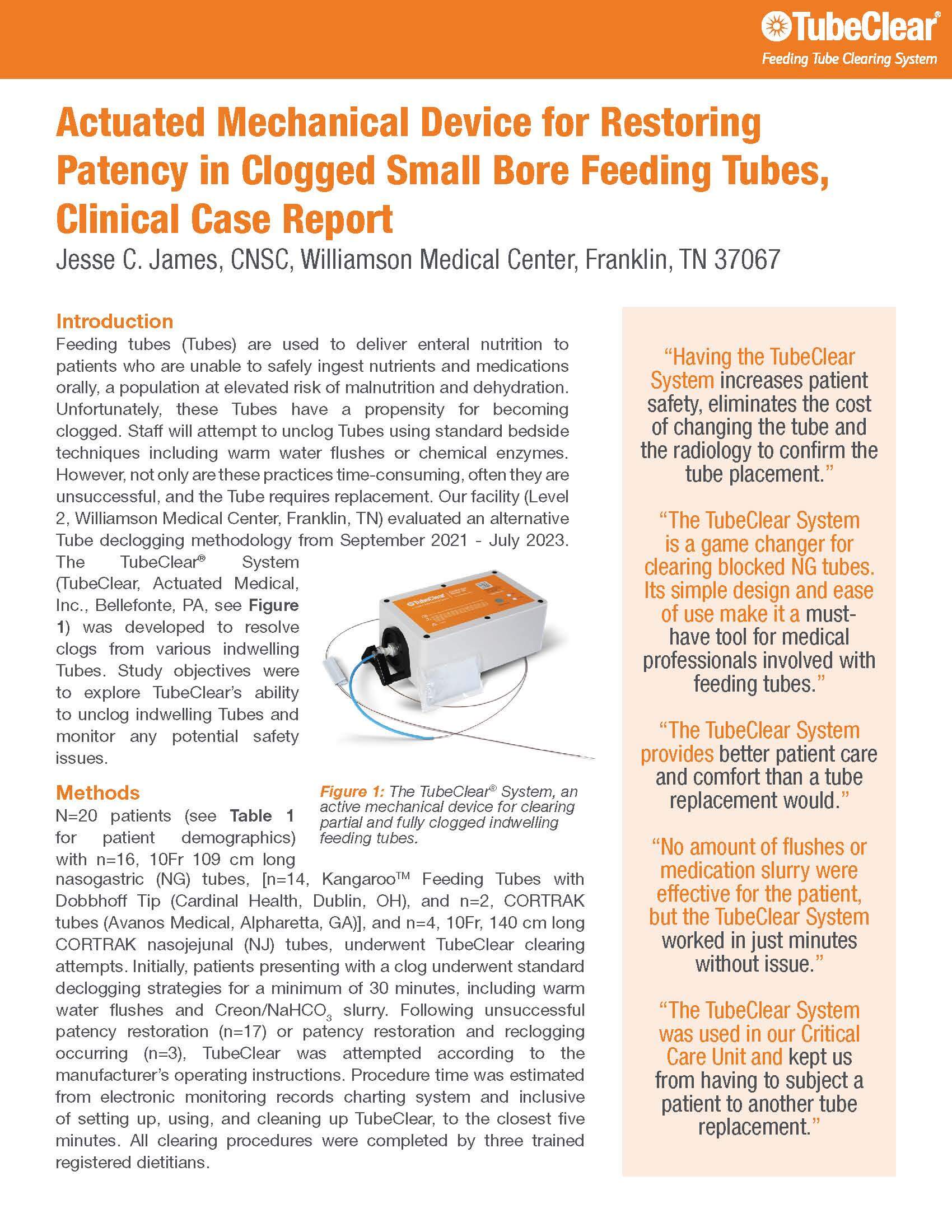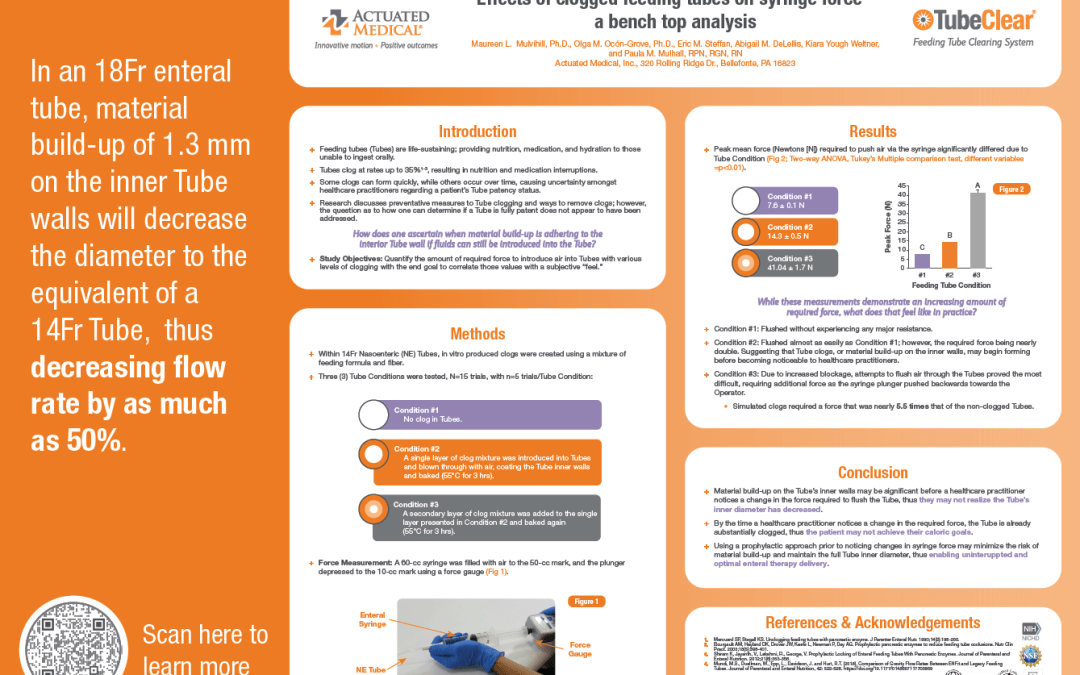
Effects of clogged feeding tubes on syringe force -a bench top analysis
ASPEN 2024 Poster

Effects of clogged feeding tubes on syringe force – a bench top analysis


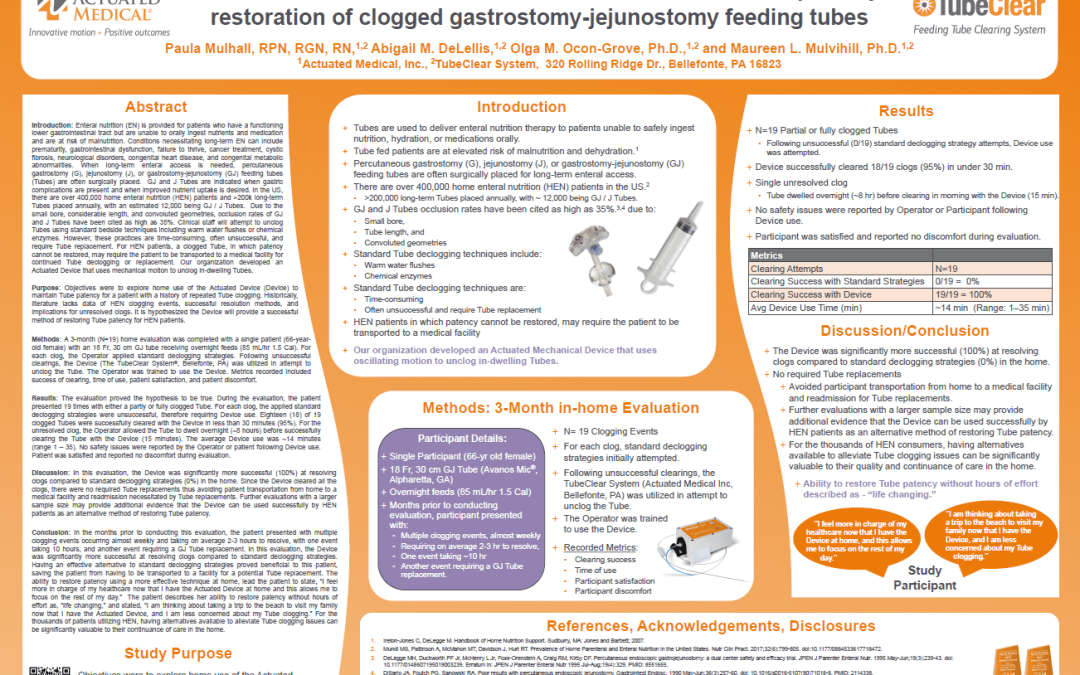
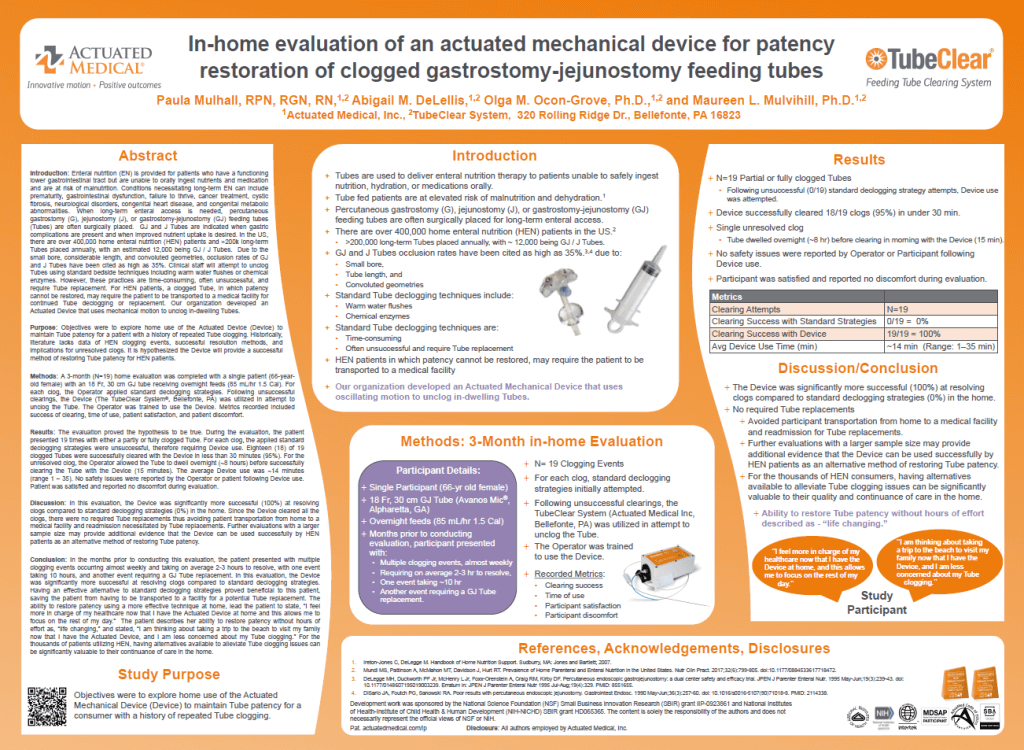
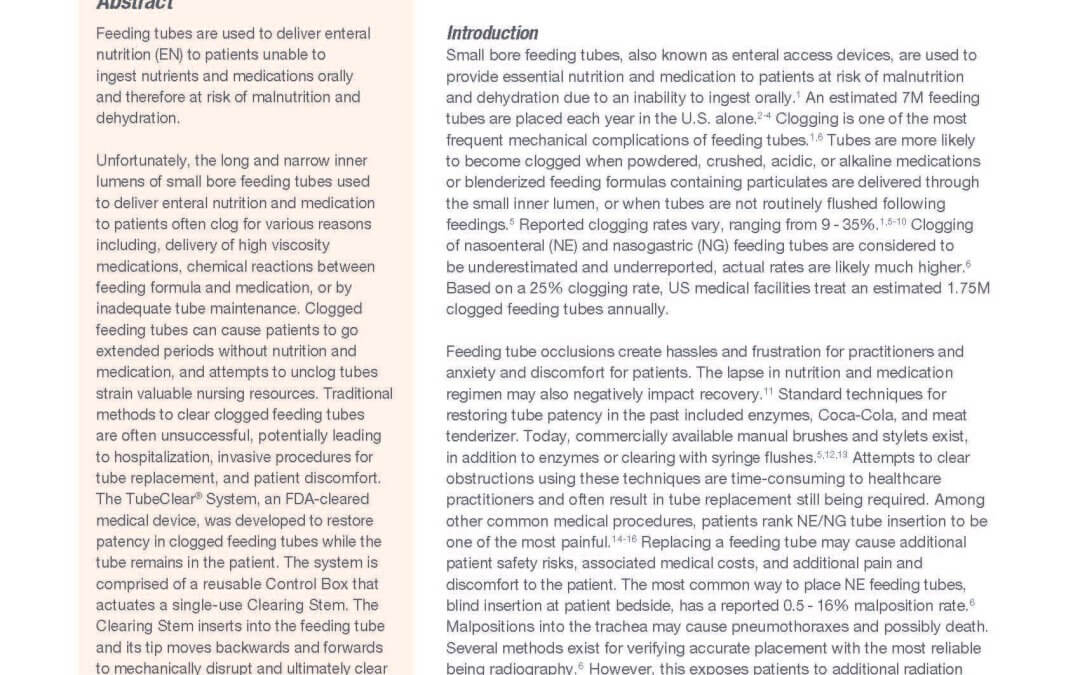
Small bore feeding tubes, also known as enteral access devices, are used to provide essential nutrition and medication to patients at risk of malnutrition and dehydration due to an inability to ingest orally. An estimated 7M feeding tubes are placed each year in the U.S. alone. Clogging is one of the most frequent mechanical complications of feeding tubes. Tubes are more likely to become clogged when powdered, crushed, acidic, or alkaline medications or blenderized feeding formulas containing particulates are delivered through the small inner lumen, or when tubes are not routinely flushed following feedings. Reported clogging rates vary, ranging from 9 – 35%. Clogging of nasoenteral (NE) and nasogastric (NG) feeding tubes are considered to be underestimated and underreported, actual rates are likely much higher. Based on a 25% clogging rate, US medical facilities treat an estimated 1.75M clogged feeding tubes annually.
This is one of the best devices to come out in a long time to allow critical care nurses to do what they do best…care for their patients.
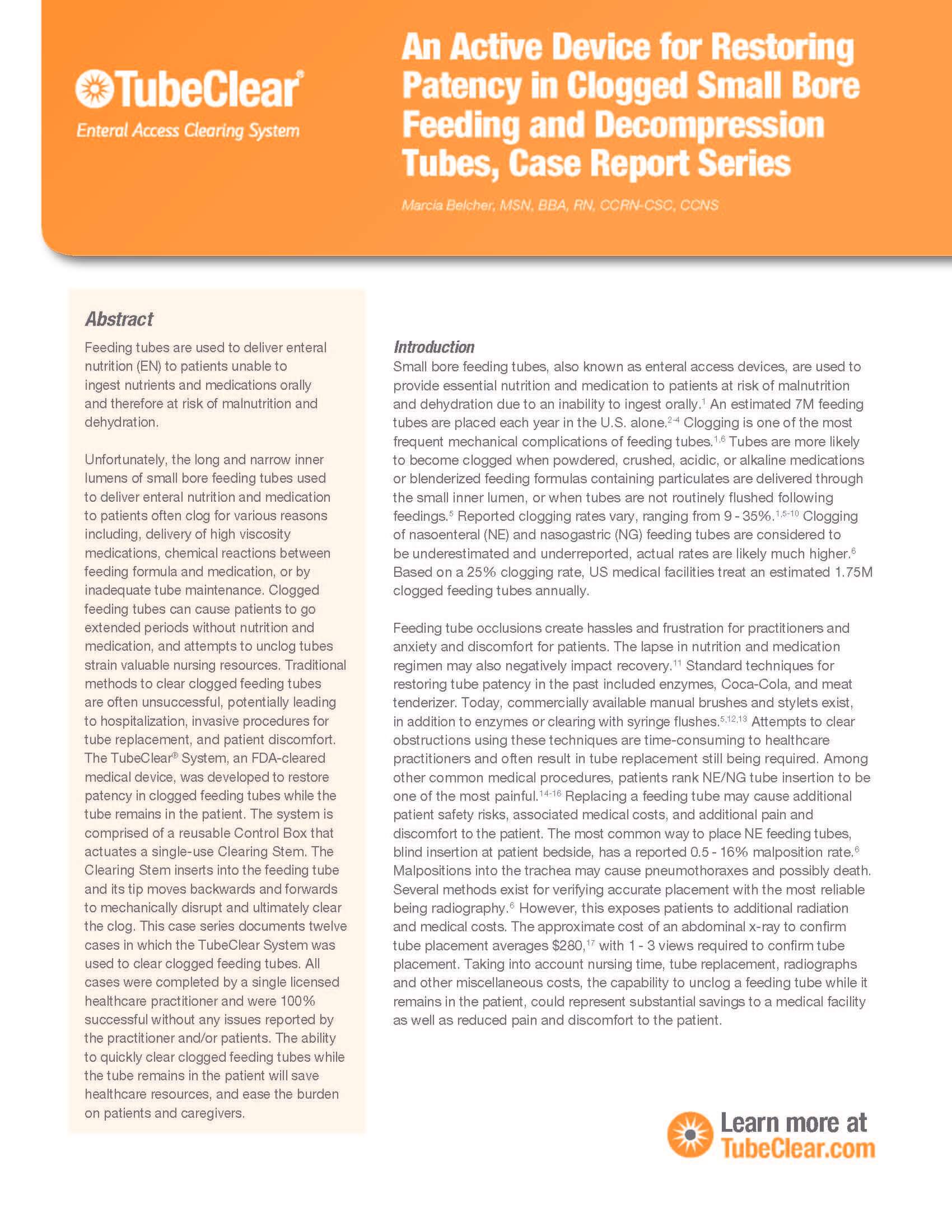
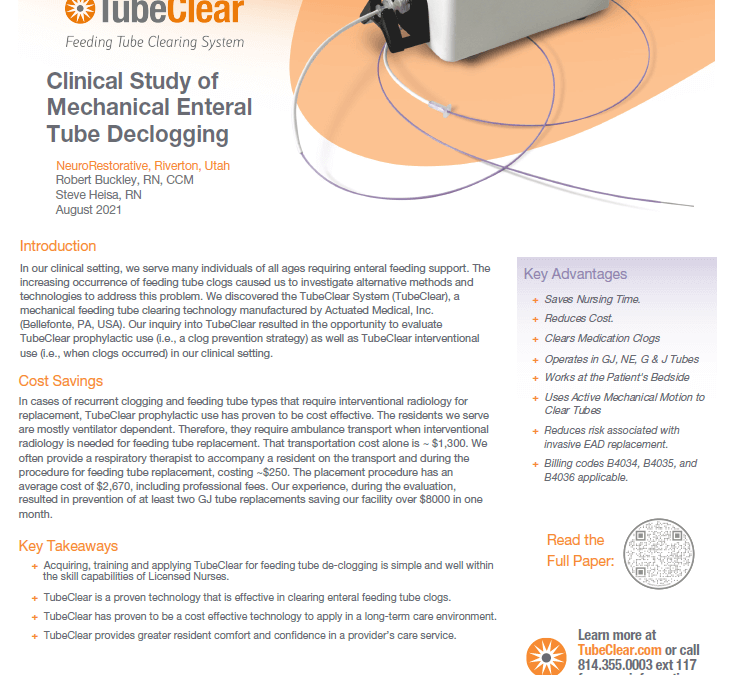
Key Takeaways
TubeClear is very cost-effective when utilized at long-term care facilities as it decreases inconvenience and discomfort to patients and saves staff time in clearing a clogged feeding tube
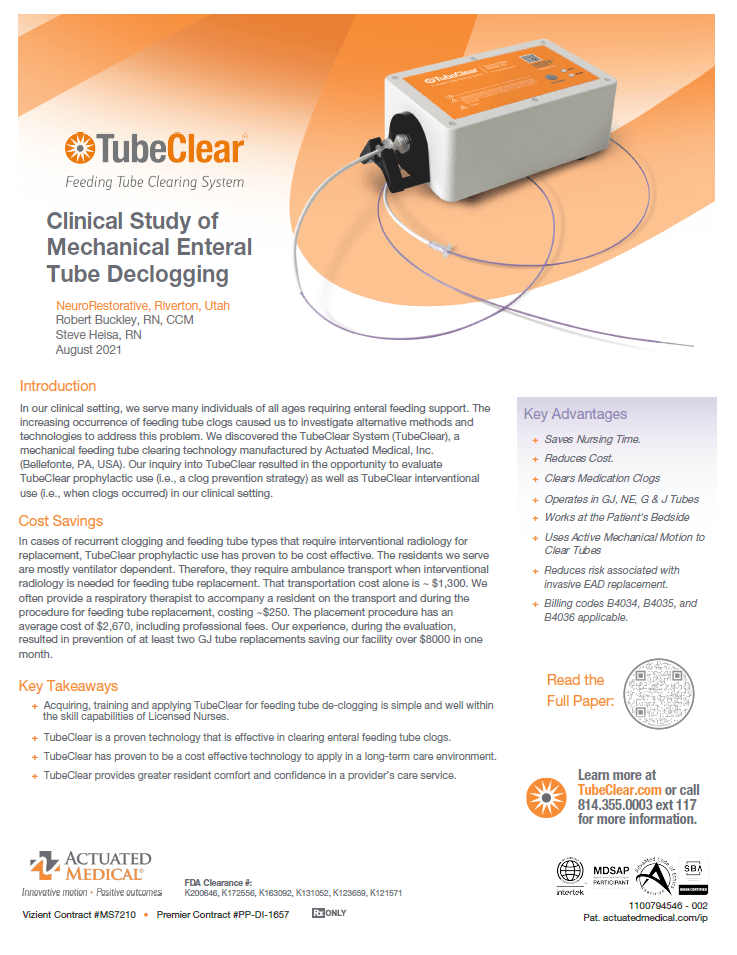
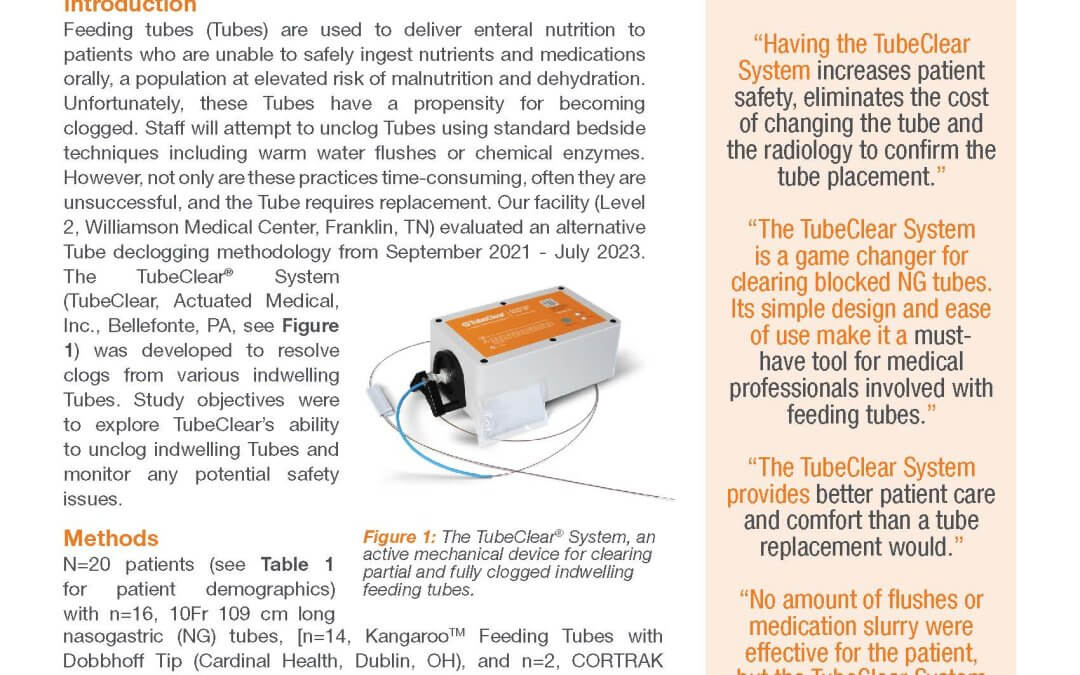
Feeding tubes (Tubes) are used to deliver enteral nutrition to patients who are unable to safely ingest nutrients and medications orally, a population at elevated risk of malnutrition and dehydration. Unfortunately, these Tubes have a propensity for becoming clogged. Staff will attempt to unclog Tubes using standard bedside techniques including warm water flushes or chemical enzymes. However, not only are these practices time-consuming, often they are unsuccessful, and the Tube requires replacement. Our facility (Level
2, Williamson Medical Center, Franklin, TN) evaluated an alternative Tube declogging methodology from September 2021 – July 2023. The TubeClear® System
(TubeClear, Actuated Medical, Inc., Bellefonte, PA, see Figure 1) was developed to resolve clogs from various indwelling
Tubes. Study objectives were to explore TubeClear’s ability to unclog indwelling Tubes and monitor any potential safety issues.
The TubeClear System is a game changer for clearing blocked NG tubes. Its simple design and ease of use make it a musthave
tool for medical professionals involved with
feeding tubes.
